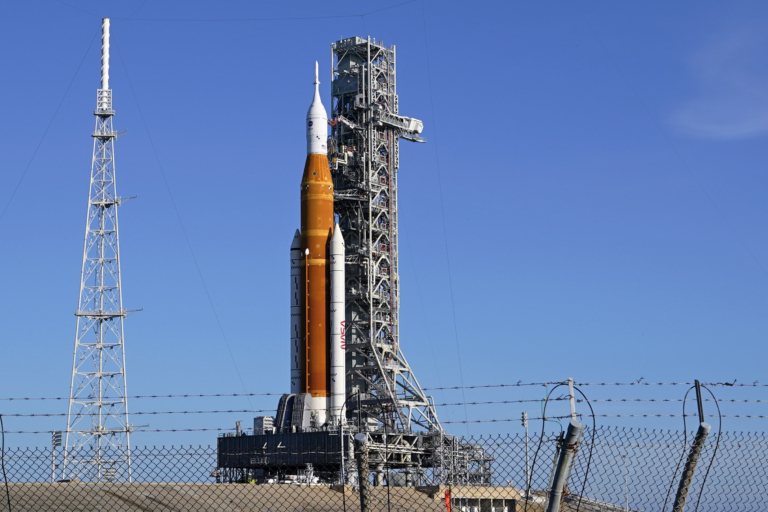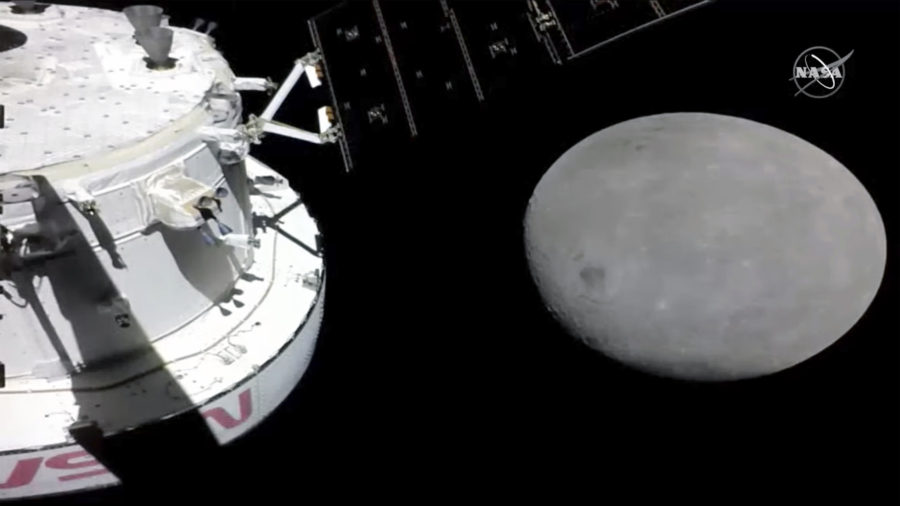Humans could well be living on the moon within the next decade, according to a NASA official.
The Artemis rocket, which carries the agency’s Orion spacecraft, was launched on Nov. 16 at 1:47 a.m. ET from the Kennedy Space Center in Florida, as part of NASA’s Moon to Mars exploration mission.
NASA hopes to one day return astronauts to the moon and eventually establishing a long-term human presence there through the Artemis missions.
It also hopes the lunar presence will serve as a stepping stone for astronauts on their way to Mars.
Three test dummies were aboard Wednesday’s rocket, which will see Orion travel approximately 40,000 miles beyond the moon and return to Earth over the course of 25.5 days, according to NASA.
Howard Hu, the Orion Program manager, told the BBC on Sunday that Wednesday’s launch of the Artemis rocket marks the first step the agency is taking toward “long-term deep space exploration, for not just the United States but for the world.”
The NASA official added that the agency hopes to have humans living on the moon in the near future.
“Certainly in this decade, we’re going to have people living [on the moon],” Hu said. “The durations, you know, depending on how long we’ll be on the surface. They’ll be living, they’ll have habitats and they’ll have rovers on the ground. … So, not only are we able to work in delivering people to the moon, getting people down to the surface of the moon, they still have to have the infrastructure.”

Artemis Mission Proceeding as Planned
Wednesday’s launch marked the first success after two attempts in September were called off owing to Hurricane Ian and a liquid hydrogen leak.
Previously in August, the launch was canceled after a faulty temperature sensor was discovered.
If the latest mission proves to be a success, then the next Artemis flight would contain a human crew, followed by a third that would contain astronauts who will land on the moon.
That would mark the first time they have done so since Apollo 17 in December 1972.
Hu told the BBC that a big reason the agency is attempting to go back to the moon is to see if there is water at its south pole which could potentially be converted into fuel for crafts that are going to Mars.
“It’s really going to be very important for us to learn a little bit beyond our Earth’s orbit and then do a big step when we go to Mars,” Hu said. “And the Artemis missions enable us to have a sustainable platform and transportation system that allows us to learn how to operate in that deep space environment.”
On Monday, the Orion spacecraft flew 81 miles above the surface of the moon, at a speed of 5,102 miles per hour, NASA said in a blog detailing the Artemis I mission.
“The mission continues to proceed as we had planned, and the ground systems, our operations teams, and the Orion spacecraft continue to exceed expectations, and we continue to learn along the way about this new, deep-space spacecraft,” said Mike Sarafin, Artemis I mission manager, in a briefing on Monday at Johnson Space Center.
From The Epoch Times

